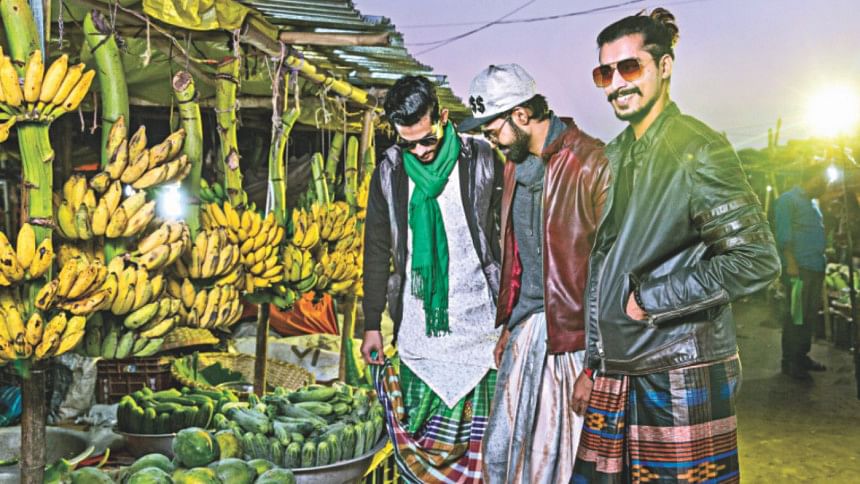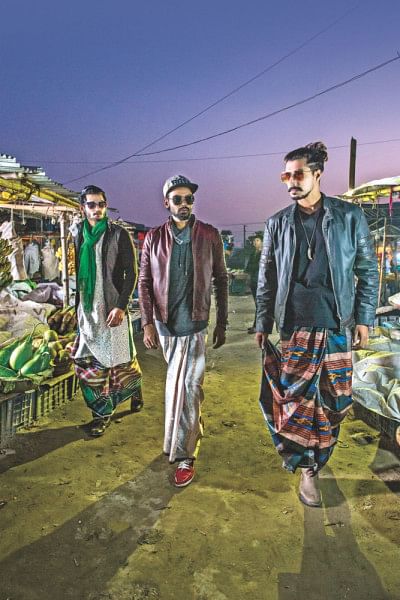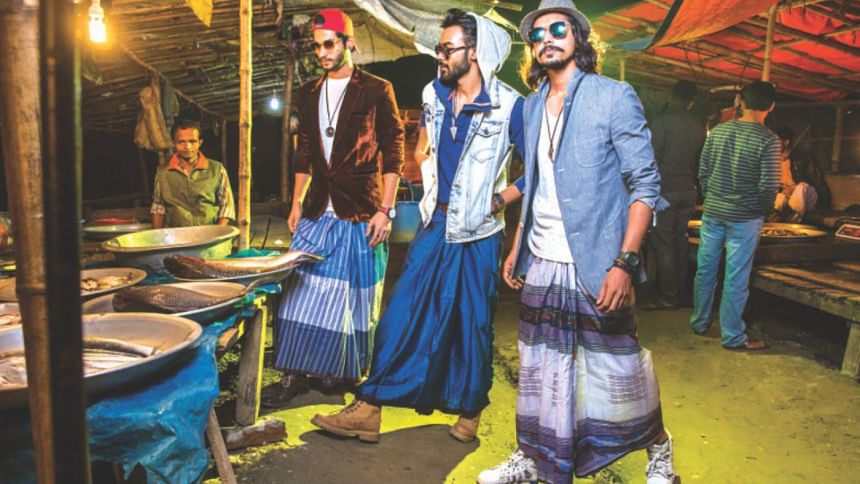Lungi - our very own globetrotter

For any Bengali, this is hardly a rare sight! One sees lungis everywhere — from the hardworking farmers harvesting their crops to the exhausted city office-goer relaxing at the end of the day. Perhaps, the lungi is just naturally etched into the tradition of Bangladesh. And that is when you remember Kaiser Haq's poem 'Ode on the Lungi.' In his exact words…
"...at any one moment
there are more people in lungis
than the population of the USA…"
Does that mean our wonder attire is not just limited to the Indian subcontinent? Surprisingly, the answer is yes. In fact, the reach of the lungi is far wider than you can possibly imagine. Of course, it is not quite called lungi all over the world. It is not even worn the way a typical Bengali would, but what even is fashion if you do not blend it with your own culture and language?
Historical evidences prove that the lungi did originate in this part of the globe, present day Tamil Nadu to be exact. The attire, then made of Muslin, was first sent to Babylonia, and soon enough, boats set sail to East Africa, Egypt, and the Arabian Peninsula. Its comfort and versatility were easily accepted in all regions, and each locality soon started learning the trade themselves.

ACROSS THE CONTINENTS
Sarong, mundu, htamein, ma'awaiis, or the izaar — the names are endless and so are the traditions surrounding them. Going back to its place of origin, for South Indian men the mundu is a symbol of purity and ethnicity. They don in their golden embroidered mundus during festivities such as wedding ceremonies and while performing religious rites.
On another part of India, the lungi is hardly limited to men only. The laacha is adorned with vibrant colours of reds, greens and oranges, and is a popular dance wear for Bhangra dancers as well as those opting for comfort while relaxing at home.
The pre-colonial 30 feet pasos and the 4.5 feet htamein has been replaced by the more convenient longyi. The modern paso is worn by making a fold on one side in front and tied by tucking them together at the waist. Women, on the other hand, wrap the cloth around with a single broad fold in front, with their hemlines changing as per fashion trends. With men opting for checks and women choosing bright hues and florals, the patterns on the longyi are seemingly endless. In fact, a traditional Myanmar wedding is incomplete without matching silk longyis of houndstooth patterns for the bride and the groom.
For Indonesians, the sarong was an emblem of resistance against imperialism during the Dutch colonial era. The reason for the sarong holding such a strong place in the hearts of the people is because of its production technique, using regional materials and techniques such as the songket. Whether it is the plaid checks for men, or the bright batik floral prints for women, the sarong is also the ultimate fashion statement of the region. Usually worn by rolling it tightly, for the Malay Muslims the sarong signifies an essence of purity and piety as traditionally it is an essential garb for the Friday prayers.
For the inhabitants of the Horn of Africa, the lungi has inspired the use of colours in their otherwise plain white Macawiis. Other than classic cotton, there are macawiis made of polyester, nylon and silk with checkered square patterns, and watermarked diamonds.
Often worn with a colourful turban, the hues portray the vibrancy of African culture.
As we hover around the African Great Lakes region, the macawiis turn to kanga, which is mostly worn by women. Etched into the culture of the region, it is often given as gifts on auspicious occasions. In fact, it was even given by healers who believed that the kishutu, a form of kanga, can be used to ward off evil spirits.

COMING BACK HOME
Carefully crafted to be the ultimate comfort wear, it is no surprise that you are bound to come across a few men obsessively and re-adjusting their lungi like the royal women of Victorian England in skirts. The '60s had the luxurious 'boro khokha' which was made of mercerised cotton and often given as a gift to grooms.
The modern-day lungi comes in mass produced blue checks to custom-made embroidered lungis. Ruhitpur of Keraniganj, and Babur Haat of Narsingdi are just some of the places famed for lungi production. To hold onto tradition, elaborately designed batik or silk lungis are still given as gifts during holuds to the groom.
Having said that, no one can deny that the lungi is struggling to maintain its position in mainstream fashion and culture of Bangladesh; the struggle is even more pronounced amongst the tribal minorities of the country. As efforts are ongoing to preserve the language and the livelihood of these communities, some of their traditions are fast disappearing. Unless they are promoted from all quarters, the rich variation of lungis of these people.
Irony as it may seem, despite being an attire of the world the lungi is fast being replaced by Western attires. Perhaps, that's why we have activists fighting hard for the lungi. The notion "I am a lungi activist" might seem bizarre to the average Bengali, but when you really think about it, actively promoting our traditional wear is probably the only way to hold onto the rich heritage of the lungi.
Photo: Sharear Kabir Heemel
Models: Rabbi, Rupom, Maruf
Wardrobe: Amanat Shah Lungi/Personal
Styling: Sonia Yeasmin Isha

 For all latest news, follow The Daily Star's Google News channel.
For all latest news, follow The Daily Star's Google News channel. 



Comments